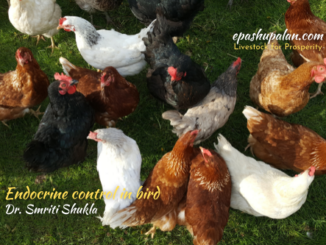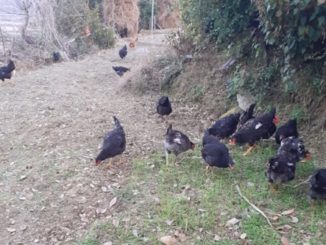Introduction
Pigeon farming is very interesting, profitable and pigeons are very popular domestic birds. Pigeons are considered as the symbol of peace. Almost all love to raise some pigeons in their home. Pigeon farming require less labour and low investment. One can raise and take care of them in leisure time. The meat of baby pigeon (squab) is very tasty, nutritious and restorative. Squabs also have huge demand and price in the market. On the other hand pigeon farming can be a great source of some extra income and entertainment. Pigeon rearing is a part of livestock and poultry and contributes some part to the economy of country worldwide. It is considered as a ready cash source of income during hard time and provides employment opportunities for villagers especially for poor women and unemployed youth. Generally, urban people rear pigeon for natural beautification and ornamental birds as source of recreation. In rural areas, pigeon rearing is practiced for commercial purpose to generate income.

Scientific Classification
Kingdom: Animalia
Phylum: Chordata
Class: Aves
Order: Columbiformes
Family: Columbidae
Genus: Columba
Species: C. livia
There are about 42 genera and 310 species of pigeons.
Some Facts about Pigeons
- “Pigeon” is a French word that derives from the Latin ’pipio’, for a “peeping” chick while “dove” is a German word that refers to the “bird’s diving flight”.
- Pigeons are medium sized birds with strong bodies & slender beaks.
- Young pigeons are called “squabs”.
- Houses for pigeons are generally called “lofts”.
- Pigeons have excellent hearing abilities. They can detect sounds at far lower frequencies than humans & thus can hear distant storms & volcanoes.
Distribution & Habitat
Pigeons are distributed everywhere on Earth, except for the driest areas of the Sahara Desert, Antarctica and its surrounding islands, and the high Arctic.
Feeding & Watering
Seeds and fruit form the major component of the diets of pigeons. According to their feeding, they can be divided into: –
a) Granivorous species (Seed-eating): They feed on seed found on the ground. They have thick walls in their gizzards, intestines, and oesophagus & long intestine.
b) Frugivorous species (Fruit-eating): They feed in trees. They have thin walls in their gizzards, intestines, and oesophagus & short intestines. They are capable of clinging to branches and even hang upside down to reach fruit.
- In addition to fruit and seeds, a number of other food items are taken by pigeons.
- Some, particularly the ground doves and quail-doves, eat a large number of prey items such as insects and worms.
- One species, the atoll fruit dove, is specialised in taking insect and reptile prey.
- Snails, moths, and other insects are taken by white crowned pigeons, orange fruit doves, and ruddy ground doves.
- Every pigeon consume 35-50g of grainy feed daily.
- Pigeon feed should contain 15-16% protein.
- Pigeons are susceptible to calcium deficiency from eating only seeds. Seeds should only be 50% of a balanced diet, never the entire diet.
- Pigeons are fed oyster shell, lime stone, bone powder, salt, grit mixture, mineral mixture with some green vegetables daily.
- A pair of pigeons drinks 200ml of water in a day.
- A chart of balanced feed for pigeons mentioned below:
|
Feed Ingredients
|
Amount (kg) |
| Broken Wheat | 2.8 kg |
| Broken Maize | 2.2 kg |
| Mustard | 1.0 kg |
|
Broken Gram
|
1.0 kg |
| Soyabean Cake | 0.8 kg |
| Rice Bran | 1.8 kg |
|
Salt
|
0.4 kg |
|
Total
|
10 kg |
Breeding
- Generally pigeons are raised in pair. One pair of male and female pigeon stay together for their whole life (monogamous).
- They can survive for about 12-15 years.
- Male and female both collect straw together and build a small nest for them to live.
- Female pigeon start laying eggs at the age of 5-6 months of age.
- They lay two eggs every time and their breeding capability stays for about 5 years.
- Both male and female pigeons hatch the eggs. Usually it takes about 17-18 days to hatch the eggs.
- The squabs are fed with a glandular crop secretion called “pigeon milk” or “crop milk”. Female pigeon feed their babies in this way for 10 days. At the age of 26 days, they become adult & start taking supplementary food by their own.
Incubation of Eggs
- The incubation period for common pigeons is 17-19 days.
- The female sits on the egg from late afternoon through the night until about 10AM. The male then takes over and does the day shift. Once the eggs hatch, both parents feed the young squabs.
- Pigeon eggs need an incubation temperature of 98.6 -100.4°F.
Nutritional Facts of Pigeon Meat (Squab)
The calories in pigeon meat (squab) per 100g is 141 calories.
- Protein – 21.8g (87.2 Cal)
- Fat – 5.1g (45.9 Cal)
- Carbohydrate – 0.3g (1.2 Cal)
Vitamin (per 100g squab):
- Vitamin A Retinol Equivalent – 16μg
- Vitamin D – 0.2μg
- Vitamin E Alpha Tocopherol – 0.3mg
- Vitamin K – 5μg
- Vitamin B1 – 0.32mg
- Vitamin B2 – 1.89mg
- Niacin – 9.9mg
- Vitamin B6 – 0.53mg
- Vitamin B12 – 2μg
- Folate – 2μg
- Pantothenic Acid – 4.48mg
- Vitamin C 3mg 33mg
Mineral (per 100g of squab)
- Sodium – 88mg
- Potassium – 380mg
- Calcium – 3mg
- Magnesium – 28mg
- Phosphorus – 260mg
- Iron – 4.4mg
- Zinc – 0.6mg
- Copper – 0.17mg
- Manganese – 0.04mg
- Sodium Chloride Equivalent – 0.2g
- Fatty acid composition (per 100g of squab)
- Saturated Fatty Acids – 1.23g
- Monounsaturated Fatty Acids – 1.9g
- Polyunsaturated Fatty Acids – 1.09g
- Total Fatty Acids – 4.23g
- N3 Polyunsaturated – 0.05g
- N6 Polyunsaturated – 1.04g
- Oleic Acid – 1600mg
- Linoleic Acid – 800mg
- Alpha Linolenic Acid – 10mg
- Icosadienoic Acid – 15mg
- DGLA (Dihomo-γ-linolenic acid) – 10mg
- Arachidonic Acid – 180mg
- Icosapentaenoic Acid – 4mg
- Docosatetraenoic Acid – 26mg
- Docosapentaenoic Acid N3 – 26mg
- Docosahexaenoic Acid – 11mg
Pigeon Meat comprises of
Moisture: 60%
Protein: 25%
Fat: 13.2%
Fibre: 0.3%
Ash: 1.4%
- A dietary crude protein content of 12-18%, and metabolizable energy content of around 12 MJ/kg, based on production of offspring, is recommended for feeding of adult pigeons.
- Squabs have an extraordinary high rate of maturing (0.14 to 0.19 g/day) in comparison to other domesticated avian species.
- Pigeons could utilize lipids better than carbohydrates as energy sources.
- Crop milk consists primarily of protein – 11.0 to 18.8% and fat – 4.5 to 12.7%, and lacks significant levels of carbohydrates.
Housing of Pigeons
- The house for pigeons should be built in a higher place to keep them free from dog, cat, mouse and some other harmful predators.
- Huge flow of air and light inside the house should be ensured.
- The entrance of rain water should be prevented directly inside the house.
- The house can be built by thin wood or tin, bamboo or with packing boxes.
- Every pigeon requires about 30 cm long, 30 cm high and 30 cm wide space.
- Every room of the pigeon house should have the facilities of staying two pigeons.
- The house will be adjoining to each other and polyhedral.
- A door should be kept on every room measuring 10×10 cm.
- The house should always be tried to keep clean and dry.
- The house should be cleaned once or twice per month.
- Food and water pot should be kept near the house.
- Some straw should be kept near the house, so that the pigeons can make bed for them.
Maintenance of Hygiene in Loft
1. Cleaning the loft:
- All the waste matter, droppings and litter should be removed from the loft daily, then vacuum-cleaned.
- Feed troughs and waterers should be cleaned daily with hot water and dried before use.
2. Disinfection
- Using disinfectants: To eliminate pathogens, like viruses (e.g. pox), bacteria (e.g. Salmonella, coli), mycoplasms and fungi, disinfectants are used. After cleaning, the loft, floor, walls, seat shelves and other equipments should be sprayed with a working solution of disinfectants @ 60 ml (3 dosing heads) per 2 litres of water. Then 4 hours was given for full effect. There is no need of rinsing off with water. Pigeons can remain in the loft.
- Using parafectans: To eliminate worm eggs and worm larvae (especially of round worms and hair worms), as well as coccidial oocysts and trichomonads; simultaneously effective against viruses, bacteria and fungi, parafectans are used. After cleaning, the loft should be disinfected with a working solution of parafectans @ 60 ml (3 dosing heads) per 2 litres of water. Then 2 hours was given for full effect. There is no need of rinsing off with water. Pigeons should be removed from the loft and returned only after the drying of disinfectant and the loft should be thoroughly ventilated.
- During the flying season, lofts should only be disinfected in the course of treatment for specific diseases.
3. Prevention of spread of pathogens by using ectoparasiticides
Mites (including red bird mites), ticks, fleas and lice (including plumage lice) can transmit infectious organisms in the same way as flies, mosquitoes and beetles. The loft and especially the cracks inhabited by vermin should be sprayed about every 2 months with a working solution of chevi-tren @ 60 ml per 2 litres of water or ins 15 @ 60 ml per 2 litres of water.
4. Steps should also be taken to control small rodents.
5. Domestic poultry and wild birds must be kept away from the loft area.
6. Stray pigeons should be kept in quarantine outside the loft area.
Breeds of Pigeons
Pigeon breeds are mainly of 3 types:
a) Meat type breeds (Utility): White King, Texona, Silver king, Gola, Lokha, etc. are meat productive pigeons.
b) Entertaining type breeds: Moyurponkhi, Shirazi, Lahore, Fantail, Jacobin, Frillback, Modena, Trumpeter, Turbit, Mukhi, Giribaz, Templar, Lotal etc. are most popular entertaining pigeons.
- Fancy/ Ornamental/ Exhibition purpose
- Flying/ Sporting purpose :
- Pigeons are kept by enthusiasts for the enjoyment of flying / sporting competitions.
- Breeds such as Tipplers are flown in endurance contests by their owners. Flying results of up to 22 hours have been reported.
- A group of pigeons flying together is called a “kit”.
c) Homing Pigeons: E.g.: Racing Homer, Cher Ami, G.I. Joe
- Pigeon post is the use of homing pigeons to carry messages. Pigeons were effective as messengers due to their natural homing abilities.
- The pigeons were transported to a destination in cages, where they would be attached with messages, and then naturally the pigeon would fly back to its home where the owner could read their mail. They have been used in many places around the world.
- Pigeons have also been used to great effect in military situations, and are in this case referred to as war pigeon. Racing homer breed of pigeon was used in wars.
Feral Pigeons
- Many domestic birds have escaped or been released over the years, and have given rise to the feral pigeon.
- These show a variety of plumages, although some look very like pure rock pigeons.
- The scarcity of the pure wild species is partly due to interbreeding with feral birds.
- Domestic pigeons can often be distinguished from feral pigeons because they usually have a metal or plastic band around one (sometimes both) legs which shows, by a number on it, that they are registered to an owner.
Religious Significance of Pigeons
- Many religious groups including Muslims, Hindus and Sikhs feed pigeons for religious reasons.
- Many older Sikhs feed pigeons ceremoniously to honour the high priest & warrior Guru Govind Singh who has a known friend of the pigeon (or rock dove).
- The pigeon is reversed in India with huge flocks numbering many thousands of birds being fed daily at Hindu temples in town & city centres throughout the country.
- In the Christian religion, the pigeon is a symbol of both peace & the Holy Spirit.
Mirror Test’s Effect
- Scientists have shown that pigeons are able to discriminate their video images even with a 5-7 second delay, thus having self-cognitive abilities higher than untrained 3-year-old children who have difficulty recognizing their self-image with only a 2 second delay.
- Researchers trained pigeons to discriminate real-time self-image using
mirrors as well as videotaped self-image, and proved that pigeons can recognize video images that reflect their movements as self-image. - Pigeon is one of the six species and the only non-mammal to have this ability.
Seeing Ability
- Pigeons, like humans, can see colour, but unlike humans they can also see UV light, a part of spectrum that humans can’t see.
- Because of this unique sense combined with excellent all-round vision, pigeons are often used in search & rescue missions at sea.
Navigational Ability
- Pigeons are renowned for their outstanding navigational abilities.
- They are able to sense the Earth’s magnetic field with tiny magnetic tissues in their head (magnetoception).
- They also have compass sense.
Diseases of Pigeons
Diseases in pigeons are comparatively less than any other poultry birds. However, they suffer from TB, paratyphoid, cholera, pox, new castle, influenza etc. Besides this, they can also suffer from various ectoparasites and malnutritious diseases. Following remedy methods should be followed for welfare of pigeons:
- The pigeon house should be kept clean and germ free.
- The disease affected bird should be separated from the healthy birds.
- The pigeons should be vaccinated timely.
- They should be kept free from worms.
- They should be fed balanced food to prevent malnutritious diseases.
- Medicines should be used for removing ectoparasites from their body.
Pigeon Pox Vaccination Schedule
The best means of control is active immunisation of all pigeons in the flock that appear healthy with chevipok®.
Timing of vaccination:
Adult pigeons: 5 weeks before mating (follicle method) or 3 weeks before mating (subcutaneous injection)
Young pigeons: 9th week of age (follicle method or subcutaneous injection)
Vaccination of adult pigeons against pox (only follicle method) can be performed simultaneously with vaccination against paramyxovirus infection.
Vaccination procedure
Follicle method
- Vaccine with the content of 50 doses is diluted in 5 ml of Diluent.
- After removing 6 to 10 feathers from the outside of the upper leg, the vaccine is rubbed into the featherless follicles with a hard brush.
- Vaccination is checked by examining the vaccinal pustules – swellings of the follicles the size of a pinhead or peppercorn, which develops at the end of the first week after vaccination.
- The pustules are most apparent 7 to 9 days after vaccination and subside over the next 2 to 3 weeks.
- The immunity is fully developed after involution of the pustules. Annual booster vaccinations may only produce indistinct vaccinal pustules.
- If formation of pustules is incomplete or does not occur at all, vaccination should be repeated after about 4 weeks.
Subcutaneous injection
- Vaccine with the content of 50 doses is diluted in 10 ml of Diluent.
- Dose: 0.2 ml per pigeon.
- The injection is administered dorsally in the neck in the direction of the tail, but not immediately behind the head.
Onset of immunity: At the latest 21 days after vaccination
Duration of immunity: min. 9 months
Note:
- All pigeons in the flock should be vaccinated.
- Until the dropping-off of the crust at the vaccination sight, vaccinated pigeons are a potential source of contagion for non-vaccinated ones.
- The dropping-off of the crust takes place 3 to 4 weeks after vaccination.
Additional measures
The following measures ensure that vaccination is successful, thus safeguarding the health and performance of the pigeons:
- Birds should be kept under the correct conditions.
- Best possible diet should be provided to strengthen the condition.
- Livimun® should be administered to boost the specific immune reaction.
- Multivitamin EB12 should be given to the birds.
- The flock should be protected against the introduction of pathogens.
- Bath water should be removed and free flight should be restricted for affected pigeons for 3 days.
Pigeon pox: Requirements for the flock
|
Product and Duration of treatment |
Dosage |
Total requirements for 100 pigeons (entire treatment period) |
| chevipok® 1 application | 0.2 ml = 1 dose per pigeon | 100 doses 1 packages |
| livimun® 8 days | 20 ml per 2 litres or daily feed ration of 40 pigeons |
400 ml
2 bottles |
| multivitamin EB12 4 days | 1 sachet per 2 litres or 2 caps. per pigeon per day |
10 sachets 1 packages 800 capsules 8 packages |
Pigeon Related Illness
- Pigeon breeders sometimes suffer from an ailment known as “bird fancier’s lung” or “bird-breeder’s lung” or “pigeon lung”. Pigeon lung is a form of hypersensitivity pneumonitis caused by the inhalation of the avian proteins found in feathers and droppings. The lungs become inflamed with granuloma formation. It can sometimes be combated by wearing a filtered mask.
- Other pigeon related pathogens causing lung disease are Chlamydophila psittaci (psittacosis), Histoplasma capsulatum (histoplasmosis) and Cryptococcus neoformans (cryptococcosis).
Benefits of Pigeon Farming
- Pigeons are domestic birds and it’s very easy to handle them.
- From their 6 months of age they start laying eggs and produce two baby pigeons per month on an average.
- Pigeons can be raised easily in the home yard and roof of the house.
- It takes about 18 days to hatch their eggs.
- Baby pigeon (squab) become suitable for consumption within their 3-4 weeks of age.
- A pigeon house can be built in a small place with little investment.
- Pigeon feeding costs is very low. In most cases they collect food by themselves.
- Pigeon meat is very tasty, nutritious and has a great demand and value in the market as a good patient’s diet.
- Pigeon farming is also very pleasing and entertaining. One can spend some good times through watching the activities of pigeons.
- We can get maximum profit from them, by investing small capital and labour.
- Diseases are comparatively less in pigeons.
- Closet of pigeon is good manure for crop cultivation.
- Different types of toys can be made from the feather of pigeons.
- Pigeons help to keep the environment safe by eating different types of insects.
Conclusion
Pigeons are the analogue messenger to convey love and sharing. Every grand event starts with the flight of pigeons or doves. Pigeon rearing is a profitable business with minimum initial investment and skill. There is low rate of mortality and less need of care or management. Introduction of improved breeds will ensure better income and employment opportunity. Increasing the rate of pigeon farming may narrow the gap of animal protein consumption/deficiency and may improve the socio-economic status of the rural poor community. Rural women are involved both in household work as well as in farm activity and due to this reason they have limited time to devote on any entrepreneurship which can provide good amount of return to them. So, pigeon rearing is a risk free, suitable and sustainable entrepreneurship for the rural women, landless, marginal and small farmers for its low initial investment. Pigeon rearing will be more popular in future with the help of government by training the farmers, providing loans and creating awareness.
References
- http://www.chevita.com/en/pigeons/treatment-plan/index.php
- https://backyardpoultry.iamcountryside.com/poultry-101/pigeon-types-rollers-to-racers/
- https://en.wikipedia.org/wiki/Columbidae
- https://es.slideshare.net/MuhammadRummanAslam/pigeon-farming
- https://slism.com/calorie/111238/
- https://www.pashudhanpraharee.com/scope-of-commercial-pigeon-squab-farming-in-india/
- https://www.roysfarm.com/pigeon-farming/
- https://www.wild-bird-watching.com/Pigeons.html
|
The content of the articles are accurate and true to the best of the author’s knowledge. It is not meant to substitute for diagnosis, prognosis, treatment, prescription, or formal and individualized advice from a veterinary medical professional. Animals exhibiting signs and symptoms of distress should be seen by a veterinarian immediately. |






effective
Very nice and interesting.
Very good informative article published
Very informative
👌👌👍